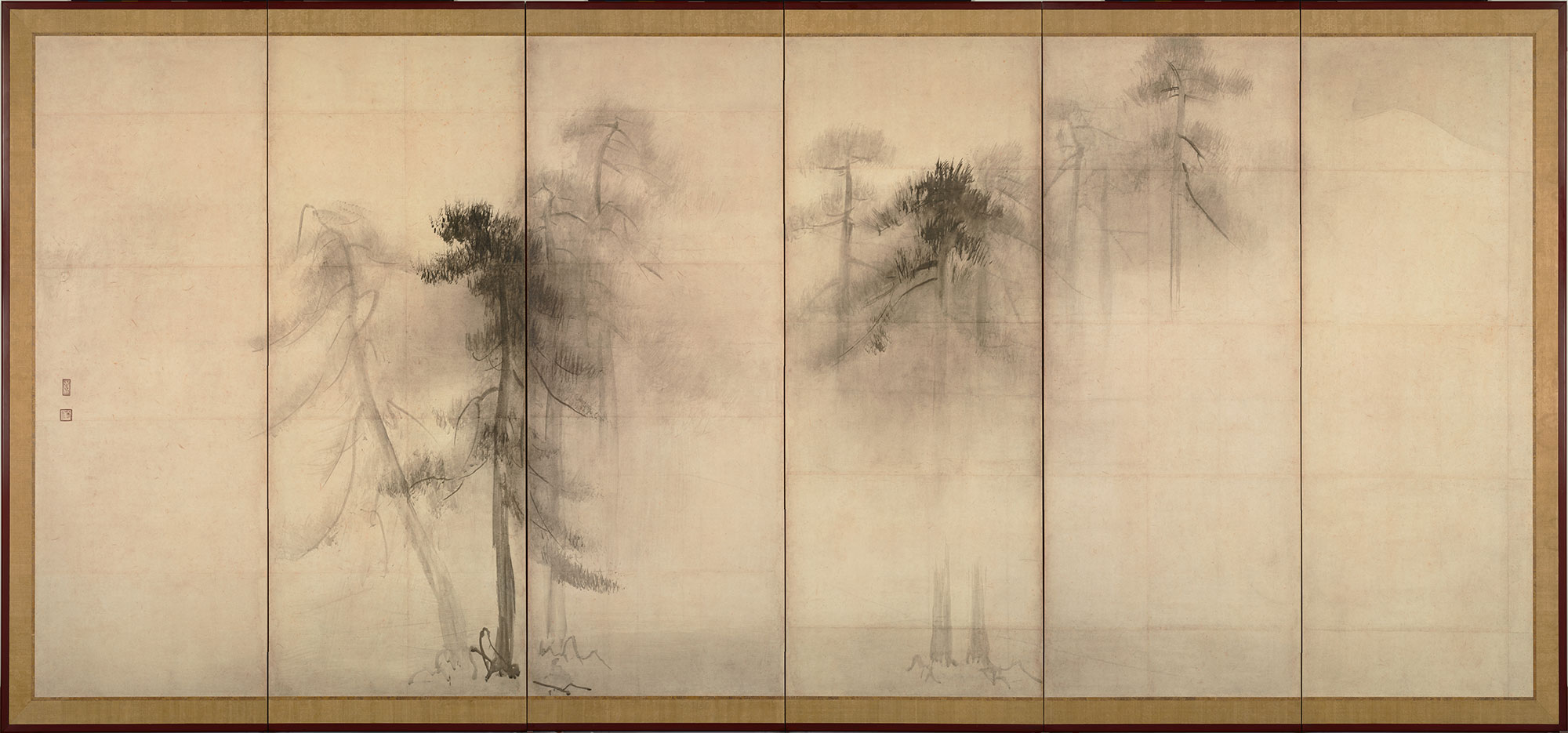Tohaku Hasegawa is one of most important Japanese painters ever, and the most important painter of the country during the Azuchi-Momoyama period, along with Kanō Eitoku, with whom he developed an important artistic rivalry. He was the founder of the so-called Hasegawa School of painting, which kept its importance for over two centuries.
The “Pine Trees” screen (Shorin-zu-byobu) is Tohaku’s most important work, and one of the most famous Japanese paintings inside and outside Japan, where it has been declared a National Treasure. The influence of Sesshu Toyo and his “splashed ink” technique is obvious in this screen, considered one of the first paintings of the history to depict only trees as subject matter – only a small part of the top of a mountain is slightly visible at the far right of the left screen.
Although the work is already beautiful at first glance, to appreciate it in its entirety we should understand the Japanese concept of Ma, a word that has no equivalent in Western languages. It refers to a negative space, a space that is substance. In the words of the Taoist philosopher Lao Tzu, “Walls and doors form the house, but the empty space within them is the essence of the house”. In the Shorin-zu-byobu, the pine trees form the landscape. The empty space is the landscape.
Read more about Hasegawa Tōhaku here.


